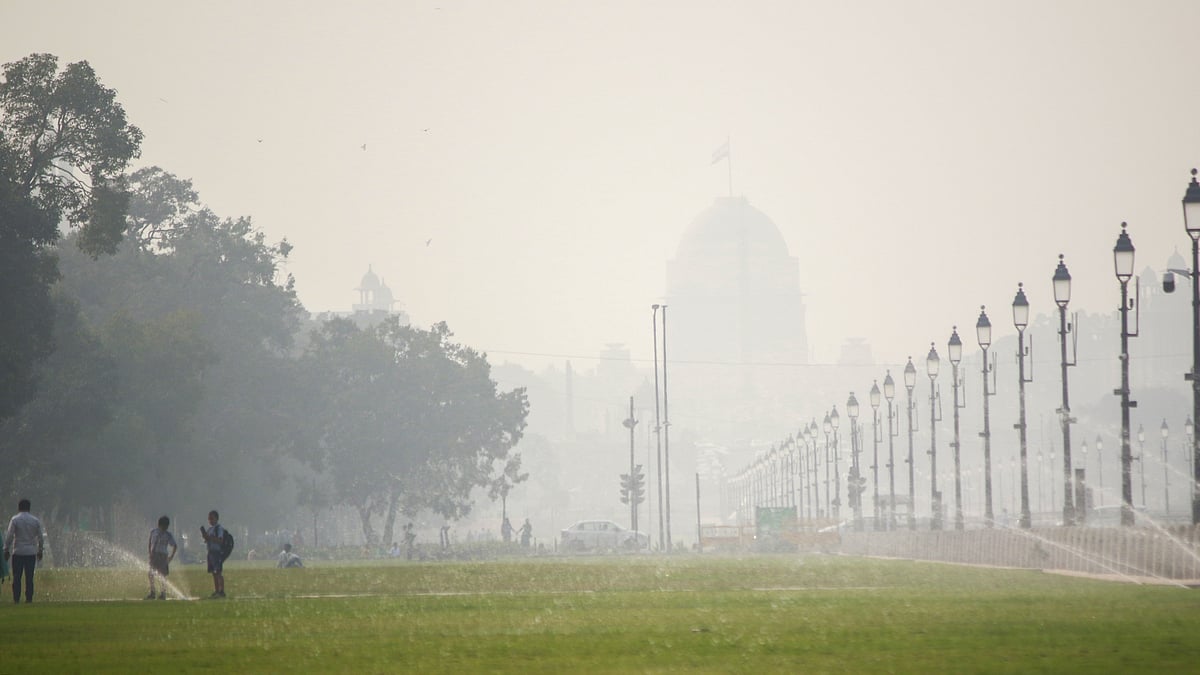Nation
Delhi NCR air quality nears 1,000 post-Diwali in places, in usual ‘gas chamber’ mode
Most monitoring stations in the ‘deep red’ as pollution spikes after fireworks all night and into the morning. Jaipur, Mumbai, Kolkata also report ‘poor’ air quality

The morning after Diwali saw Delhi-NCR blanketed in a dense toxic haze, with air quality plummeting to alarming levels. At 6 am, the Air Quality Index (AQI) at Chanakya Place touched an unprecedented 979, while Narayana village recorded 940 and Tigri Extension registered 928, turning the capital into a virtual ‘gas chamber’.
According to data from the Central Pollution Control Board (CPCB), Delhi’s 24-hour average AQI, reported at 4 pm, stood at 345, in the ‘very poor’ category way higher than Sunday’s 326.
Out of 38 monitoring stations across the city, 36 were in the ‘red zone’, indicating air quality ranging from very poor to severe.
At 10 pm on Monday, Delhi’s overall AQI was recorded at 344, with Dwarka (417), Ashok Vihar (404), Wazirpur (423) and Anand Vihar (404) registering ‘severe’ air quality levels.
Elsewhere, fog and smog also engulfed parts of Jaipur, where the Police Commissionerate area recorded an AQI of 245, placing it in the ‘poor’ category.
Published: undefined
The CPCB categorises AQI readings between 0–50 as ‘good’, 51–100 ‘satisfactory’, 101–200 ‘moderate’, 201–300 ‘poor’, 301–400 ‘very poor’, and 401–500 ‘severe’.
According to the Decision Support System (DSS), vehicular emissions contributed 15.6 per cent to Delhi’s pollution on Monday, while industries and other sources made up 23.3 per cent.
In response to the worsening conditions, the Commission for Air Quality Management (CAQM) had already implemented Stage II of the Graded Response Action Plan (GRAP) across Delhi-NCR on Sunday, following forecasts from the India Meteorological Department (IMD) and the Indian Institute of Tropical Meteorology (IITM) predicting further deterioration.
Earlier, the Supreme Court had permitted the sale and use of green firecrackers in Delhi-NCR during limited time slots from 6 am to 7 pm and 8 pm to 10 pm on Diwali eve and the day of the festival. However, widespread use of fireworks well beyond these hours has led to a severe spike in pollution levels.
Officials warn that Delhi’s air quality is expected to slip into the ‘severe’ category more broadly by Tuesday and Wednesday, as calm winds and lower temperatures continue to trap pollutants close to the ground.
Published: undefined
Follow us on: Facebook, Twitter, Google News, Instagram
Join our official telegram channel (@nationalherald) and stay updated with the latest headlines
Published: undefined